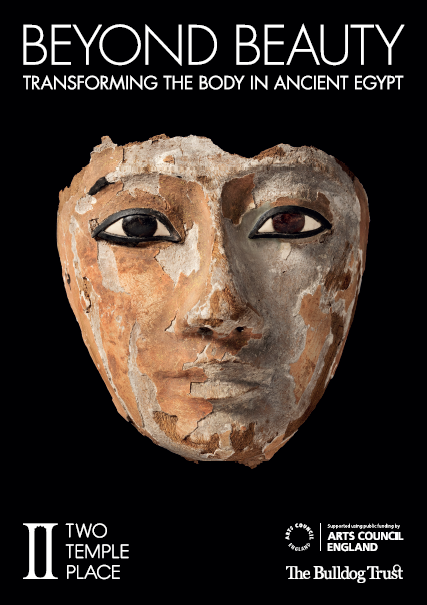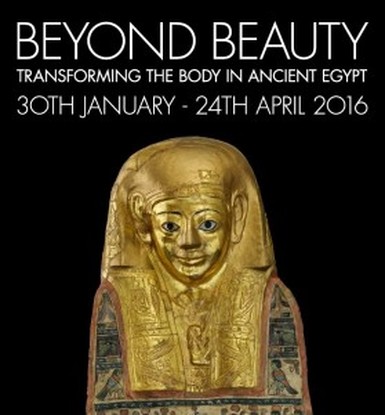|
Major London Exhibition features the ideas of Rachel Amelia Lee, Spa House, Middlehill, in 1930s Beyond Beauty - Transforming the Body in Ancient Egypt The exhibition is at Two Temple Place, Victoria Embankment, London, WC2R 3BD - entrance free. Full details of the exhibition and opening times at www.twotempleplace.org Rachel Amelia Lee (nee Oldroyd, known as Amelia) was a fascinating woman, the local secretary for the Egypt Exploration Fund, and to Box residents, a generous and thoughtful employer. In her will of 1932 she left £500 to Elizabeth Jenks, her faithful friend and cook; £300 to Isabel Simpson, her kind maid; and £200 to Tom Leaver, her man servant. Find out more about this famous Box person. 30th January - 24th April 2016 Free admission (no booking necessary) |
Emma Simpson Writes About Rachel Amelia Lee
Amelia was Egypt Exploration Fund Local Secretary for Dewsbury and this exhibition features items she was instrumental in securing for the museum including two masks (one which features on the poster), a tomb group and a cartonnage. Other items are still currently on display at Bagshaw Museum and include the painted top section of a sarcophagus, canopic jars and tomb goods.
Amelia was one of thirty-one Secretaries in United Kingdom which included other daughters of Mill Owners such as Annie Barlow, Local Secretary for Bolton.[1] It was an important role, local honorary secretaries and wealthy individual subscribers, many of whom personally interceded to nominate and convey material to their neighbouring institutions. In so doing such individuals altered the biography of the collections as they were dispersed, and they themselves became an intrinsic part of their history.[2]
Amelia is such a fascinating person – hopefully one day we’ll be able to put a face to the name ! Can any Box reader help us?
Amelia was Egypt Exploration Fund Local Secretary for Dewsbury and this exhibition features items she was instrumental in securing for the museum including two masks (one which features on the poster), a tomb group and a cartonnage. Other items are still currently on display at Bagshaw Museum and include the painted top section of a sarcophagus, canopic jars and tomb goods.
Amelia was one of thirty-one Secretaries in United Kingdom which included other daughters of Mill Owners such as Annie Barlow, Local Secretary for Bolton.[1] It was an important role, local honorary secretaries and wealthy individual subscribers, many of whom personally interceded to nominate and convey material to their neighbouring institutions. In so doing such individuals altered the biography of the collections as they were dispersed, and they themselves became an intrinsic part of their history.[2]
Amelia is such a fascinating person – hopefully one day we’ll be able to put a face to the name ! Can any Box reader help us?
Beyond Beauty Exhibition
This major new exhibition allows us to experience the ancient Egyptians at their most spectacular and at their most intimate, uncovering a civilisation fascinated by appearance and identity both in life and death.
Rare surviving imagery on exquisite painted coffins, decorated funerary masks, delicate figurines and beautifully carved reliefs emphasise the importance of body image. Meanwhile jewellery, mirrors, hairpins, scent bottles and makeup provide an insight into some surprisingly familiar daily routines and the ever-changing styles of the time. Through artefacts spanning over four millennia, from 3,500 BC to 400 AD, the viewer is invited to ask why Egyptians cared so much about transforming the way they looked and how our perceptions are influenced by the objects they left behind.
Beyond Beauty is curated by Dr Margaret Serpico with Heba Abd el Gawad and brings together Egyptology collections from our seven partner organisations: Bagshaw Museum (Kirklees Council), Bexhill Museum, Bolton Museum, Ipswich Museum, Macclesfield Museums, Royal Pavilion & Museums (Brighton & Hove) and Touchstones Rochdale.
This major new exhibition allows us to experience the ancient Egyptians at their most spectacular and at their most intimate, uncovering a civilisation fascinated by appearance and identity both in life and death.
Rare surviving imagery on exquisite painted coffins, decorated funerary masks, delicate figurines and beautifully carved reliefs emphasise the importance of body image. Meanwhile jewellery, mirrors, hairpins, scent bottles and makeup provide an insight into some surprisingly familiar daily routines and the ever-changing styles of the time. Through artefacts spanning over four millennia, from 3,500 BC to 400 AD, the viewer is invited to ask why Egyptians cared so much about transforming the way they looked and how our perceptions are influenced by the objects they left behind.
Beyond Beauty is curated by Dr Margaret Serpico with Heba Abd el Gawad and brings together Egyptology collections from our seven partner organisations: Bagshaw Museum (Kirklees Council), Bexhill Museum, Bolton Museum, Ipswich Museum, Macclesfield Museums, Royal Pavilion & Museums (Brighton & Hove) and Touchstones Rochdale.
|
About Two Temple Place
Two Temple Place is one of London's architectural gems, an extraordinary late Victorian mansion built by William Waldorf Astor on Embankment. The house is owned by registered charity, The Bulldog Trust and supports the charitable activities of the Trust through exhibitions and events hosted in the building. It also provides a unique setting for both corporate and private events, from weddings to conferences. The house was designed for use primarily as Astor’s estate office by one of the foremost neo-Gothic architects of the late nineteenth-century, John Loughborough Pearson. Astor had emigrated to England in 1891 as arguably, the richest man in the world and no expense was spared when work began on Two Temple Place in 1892. In addition to the extraordinary, opulent interior, when it was finished in 1895, Two Temple Place contained the largest strong room in Europe as well as two other enormous fortified safes. |

